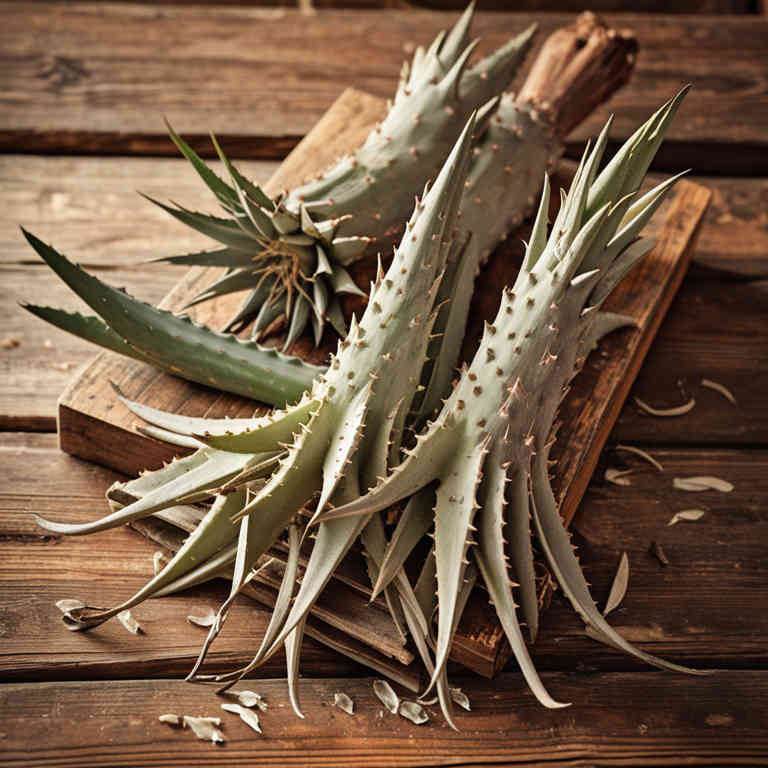Aloe plicatilis mucillage for medicinal use

Aloe plicatilis mucillage is a viscous, gel-like substance derived from the leaves of the Aloe plicatilis plant, commonly known as the "knobbed aloe.".
This preparation is obtained by processing the inner gel of the plant, which contains various bioactive compounds. In herbalism, it is used for its soothing and healing properties, particularly for skin conditions and digestive issues. It is often applied topically to treat burns, wounds, and skin irritations.
Additionally, it may be consumed internally to support gut health and reduce inflammation.
Uses
Aloe plicatilis mucillage has been used to treat digestive ailments and skin conditions for centuries, particularly in traditional African medicine.
Historically, it was valued for its soothing properties and was applied topically to heal wounds and reduce inflammation. In traditional practices, the mucilage was also used to alleviate symptoms of gastrointestinal disorders such as ulcers and gastritis. Modern research has begun to explore its potential anti-inflammatory and antimicrobial properties, leading to interest in its use for pharmaceutical applications.
Today, it is still utilized in some herbal remedies and is being studied for its possible benefits in contemporary healthcare.
Benefits
Aloe plicatilis mucillage has health benefits such as promoting digestive health, supporting skin healing, and providing anti-inflammatory properties.
This preparation is known for its soothing effects on the gastrointestinal tract, making it useful for individuals with digestive discomfort or irritable bowel syndrome. It also contains mucilage, which can help in reducing inflammation and irritation in the lining of the stomach and intestines. The mucilage acts as a protective barrier, aiding in the relief of conditions like ulcers and gastritis.
Additionally, it is often used topically to treat skin conditions due to its moisturizing and healing properties.
Constituents
Aloe plicatilis mucillage active constituents include polysaccharides, mucilage, enzymes, and anthraquinones.
These compounds contribute to its therapeutic properties, such as anti-inflammatory, antioxidant, and digestive support benefits. Polysaccharides are known to enhance immune function and promote tissue repair. Mucilage provides a soothing effect on the gastrointestinal tract, aiding in conditions like irritable bowel syndrome.
Anthraquinones may support detoxification and have mild laxative properties, though they should be used with caution.
Preparation
To make Aloe plicatilis mucillage, begin by selecting fresh leaves from the Aloe plicatilis plant, ensuring they are mature and free from damage.
Wash the leaves thoroughly under running water to remove any dirt or debris. Next, cut the leaves lengthwise and carefully scrape out the gel-like pulp from the inner portion of the leaf. Allow the extracted pulp to sit at room temperature for 24 hours to allow the mucilage to separate from the liquid.
Finally, strain the mixture through a fine mesh or cheesecloth to collect the mucilage, which can then be stored in a sealed container for future use.
Side Effects
Aloe plicatilis mucillage may lead to gastrointestinal discomfort, including nausea, vomiting, and diarrhea, due to its high content of polysaccharides and mucilage.
It can also cause dehydration if consumed in large amounts, as it has a high water-binding capacity. Some individuals may experience allergic reactions, such as skin rashes or respiratory symptoms, when using this preparation. Long-term use might interfere with nutrient absorption and contribute to electrolyte imbalances.
It is important to consult a healthcare professional before using Aloe plicatilis mucilage, especially for individuals with pre-existing medical conditions or those taking other medications.